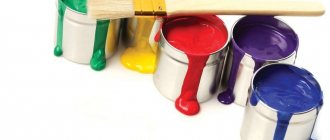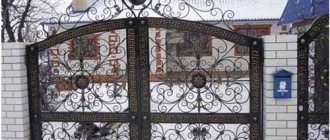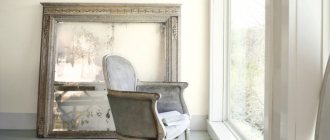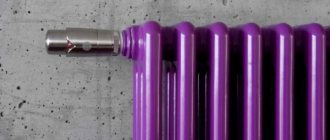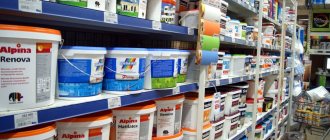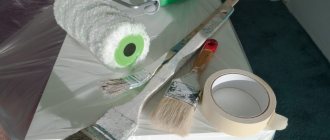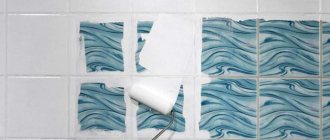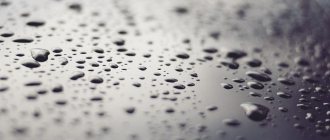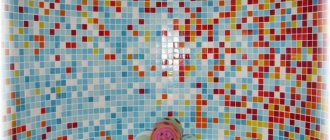Granite and marble are durable materials, but when used for monuments, time has a negative impact on them. After several years, you may find that the monument has begun to look aesthetically unpleasant, and the inscriptions have faded or been completely erased. It is not necessary to completely replace the product; restoration work is allowed. In this case, you can cope on your own, without turning to professionals. It is important to choose the right paint for monuments. The process and types of coatings will be discussed in detail below.
Monument care
To avoid having to frequently resort to painting the monument, proper care is required. Experts recommend adhering to the following principles for caring for granite and marble products:
- Trees and bushes should not grow near the product; due to their root system, it can damage the material. You shouldn’t plant a lot of flowers nearby either, they attract moisture, which negatively affects the stone;
- No aggressive chemical elements are used to wash the surface of the monument; any kitchen detergents are also not suitable. Due to their influence, the surface is destroyed, the cohesion of the factions becomes weaker;
- Do not use hot water or fire nearby, these elements lead to the formation of stains on the surface.
If expensive marble was used, then for safety in severe frosts, it is advisable to cover the monument with something. Film coatings or moisture-resistant fabrics can be selected. If cracks or chips have formed, they are covered with polish or other suitable means to protect the stone. The product will prevent the defect from enlarging.
No aggressive chemical elements are used to wash the surface of the monument; any kitchen detergents are also not suitable.
Scope of application
Stone paints come in the form of aerosols, that is, sold in cans, or liquid substances (available in metal cans of different sizes). You can find pigment powder on sale. It is added to the concrete solution and thus produces an imitation of stone. The compositions can have different colors and give the surface a texture that imitates different types of stone finishes.
See also
Features of application and color of paint with hammer effect, top 4 compositions
Stone paint is used:
- for painting the facade;
- for interior decoration;
- for painting walls and floors;
- as decoration for furniture elements;
- to create a water-repellent apron in the kitchen;
- for painting stairs;
- for decorating various items (vases, pots);
- for painting fences, benches, flower bed fencing;
- for painting a fireplace or stove.
Restoring the inscription on the monument
Monument paint, gold or another color, may be needed to cover faded letters. Paint is an easy option to update signatures; the painting process is simple, so you can restore the clarity of the color yourself. And this will significantly save your budget, because professional services can be expensive. For work, you should select the paint in advance, prepare the required tools, and only then you can proceed to painting. Below we will describe in detail how to paint the monument and how to do it.
Monument paint, gold or another color, may be needed to cover faded letters.
Paint selection
Stone paint for monuments must be selected correctly; not all products will be a good option. Some may move away from the surface too quickly after painting or may not adhere to the stone base. Sometimes the product peels off quickly, although the coloring occurred without problems, and the result leads to worse external properties than it was before applying the paint. Eliminating unnecessary paint is difficult; it is necessary not to scratch the material during the process.
How to paint a marble monument or another? Specialized compositions are selected, especially when it comes to letters. Products labeled “paint for marble for exterior use” based on acrylic have proven themselves; they are chosen not only for inscriptions, but also for border elements and other structures located in the cemetery. At the same time, they are also suitable as an option for painting a concrete monument.
You should not choose them if the installation was carried out using plaster without cement in the composition.
Marble paint for monuments has the following advantages:
- Durability;
- High degree of UV resistance;
- High air permeability.
You can find products in various colors on the market. The standard colors are gold, silver, black or white. You can choose between a matte or glossy effect; drying of acrylic paints takes a couple of hours. They do not emit a strong odor and are applied with a brush. If the consistency is too thick, dilute the paint with water; the shelf life of the layer is 5-10 years. You can also upgrade ordinary paint and varnish material; detailed recipes will be given later.
Specialized compositions are selected, especially when it comes to letters.
Necessary materials
The success of the result also depends on properly prepared tools and materials. To work you will need:
- Plastic spatula;
- Cleaner in paste form;
- Soft rags;
- Thinner – alcohol, with acetone;
- Gold paint on stone or other color;
- Brush;
- A means for fixing the last layer.
The success of the result also depends on properly prepared tools and materials.
Operating procedure
Begin by cleaning the surface, using a soft, damp cloth to wipe away dust and dirt. You should not leave any plaque elements in place; to remove complex contaminants, use a special paste containing phosphoric acid. The area with dirt is treated with the product, after fifteen minutes, the pasty layer is removed with a spatula.
Degreasing is carried out, only the dried surface is painted, then the following actions are performed:
- The brush is soaked in the selected material; it is important to remove the excess.
- Paint over the existing inscription, if desired, draw a new image.
- Wait until the layer dries completely.
- A fixing agent is applied; it will be more convenient to work in an aerosol form.
The inscription must be applied quickly; the paint may still dry on the painting tool.
It is necessary to apply the inscription at a fast pace.
It is possible to transform the structure of the inscription on a monument without the use of paints; polishing with zinc powder will help make the letters clearer. The method is used if you need to refresh the color, if the letters have already disappeared, then you cannot do without paint.
They work like this: the powder collected on a napkin is rubbed onto the required areas. The substance will help you easily obtain rich, bright elements. However, such a conversion should be carried out periodically, usually every couple of months.
Polishing with zinc powder will help make letters clearer.
Color corrector, paints for stone, stone restoration
Working with color
Each type of natural stone has a unique color created by nature. But sometimes the natural color of a stone needs to be changed. This can happen for several reasons:
♦ the stone has lost its natural color (faded) during grinding, under the influence of UV rays; ♦ the customer does not like his own color of the stone, and he wants the color to become brighter and more contrasting; ♦ a stone from the same batch has different shades. For example, this is a stone from different occurrence horizons or from neighboring deposits. In such a case, it may be necessary to achieve uniformity; ♦ it is necessary to give one stone after another; ♦ it is necessary to completely cover the stone with paint or apply a design to its surface.
All these cases go against nature's plans. The facing stone is basically a durable and dense material. Chemical manufacturers are trying to solve the problems listed above, with varying degrees of success, in a variety of ways. Let's look at some of them.
Coloring pigments, inks and correctors
A more radical intervention in the color of a stone is the use of pigments, inks and correctors (stone pigment. stone ink, color corrector, color dye). Coloring pigments are powdery substances with microscopic particles. Ink is concentrated dyes in liquid form. Such pigments or inks are dissolved in a special solvent or in liquid epoxy glue, which is used to impregnate the stone. This technology is used mainly in enterprises producing stone slabs from blocks. Achieving success with this method depends on the porosity and structure of the stone, the ability to choose the right color by mixing pigments or inks.
Ready-made tinting solutions, called correctors, are more widely used. They are available in the form of a flowing liquid in primary colors. Using correctors is a fairly effective way to tint a stone. The main thing is not to overdo it and not lose the naturalness of the stone - after all, the correctors themselves are available in basic and synthetic colors. Correctors can be concentrated (diluted with a special solvent) and ready for use. Paints for stone Sometimes it becomes necessary to completely paint over a stone or apply an opaque design to its surface. It is usually not customary to paint over a stone, but there are exceptions. If we do not consider completely exotic cases, curbstones are often painted, and in memorial work, portraits are painted on monuments. For this purpose, paints based on acrylic and alkyd resins are used. For inscriptions on monuments, special paints “gold” and “silver” are also produced in liquid, powder and spray form.
Any exterior paints are subject to intense exposure to natural factors. Therefore, to increase the service life, the painted areas must be coated with a special protective varnish.
Restoration of letters
Restoration work with letters does not require much time, they do not take up a lot of space, accuracy is more important here in order to repeat the previous beautiful font. The clarity of recordings deteriorates faster, rain, snow and other natural factors affect the moment.
You can use painting or rubbing with special zinc powder for restoration. The first method will last longer, but requires more time. And the second will be a short-term method, but it is carried out easily and quickly.
You can use painting or rubbing with special zinc powder for restoration.
Paints for painting stones
Paint for painting on stone must have certain qualities:
- resistance to precipitation in the form of rain, snow;
- resistance to sun exposure.
An excellent option is specialized watercolor paint for painting stones. To paint decorative parts, artificial stones or plaster elements that are protected from the influence of heat and cold, you need to use special acrylic compounds.
Another main step when working with coloring stones is the choice of brushes for painting. It is important to purchase several brushes of different diameters and sizes, which can be used to paint the entire product or individual drawings.
Painting portraits and inscriptions on a granite monument
Granite surfaces are easier to work with than marble surfaces. Granite is less demanding to care for, the material’s reaction to the use of thinners is calmer, and the likelihood of lightened defects appearing is lower. It is recommended to choose granite paint for monuments for the main area of the product in spray cans. The letters are painted using an old office using a thin brush.
There is another option, which is most often used by professionals. The method consists of applying a special acid in the required areas, it acts on the granite, and the necessary beautiful marks are obtained. But the technique is not suitable for independent implementation; it requires special skills and abilities.
Granite is less demanding to care for, and the material’s reaction to the use of thinners is calmer.
What stones are suitable for painting?
The basic requirement is that the stone must be smooth and its texture dense. The best option would be pliable pebbles. If the stone is light, even better. But porous material is not suitable for use: the pores will absorb a lot of paint inside. On a chipped cobblestone, the drawing will lose accuracy and will be deformed.
Naturally, natural stones are not always ideal in structure for painting. More precisely, not every time their form corresponds to the design. Experienced craftsmen assure that it is better to focus on the shape of the stone, and then think through the image according to it. As a last resort, stones can be made independently from cement. But this option is not for everyone: most people like to transform a specifically natural stone, asymmetrical, with its own history.
You will find a sea of ideas for painting stones in this video:
Inscriptions on marble
If the letters have already peeled off almost completely or completely, then a more complex process of surface restoration will be required. The first step is to remove the old paint; fine-grained sandpaper can be used to work through all areas where elements of the paint layer remain. If you can’t remove the flaws with sandpaper, you can try a thin chisel, a utility knife, or a hammer. But all these tools are used carefully, otherwise the marble itself can be damaged.
The easiest way to remove the old layer is with a sander.
When the surface is clean, degreaser is applied and paint is applied using the standard method. If the monument is expensive, then it is better not to save money and entrust the work to professionals; installing a new one, if the monument is damaged, will cost much more.
If the monument is expensive, then it is better not to save money and entrust the work to professionals.
KM recipes from the people
As mentioned earlier, it is possible to change the characteristics of coloring agents using conventional components. This is an economical option for painting a marble monument. Add a little borax solution and drops of nitric acid to acrylic paint. As a result, you get white paint; you can use color to get a different shade.
Add a little borax solution and drops of nitric acid to acrylic paint.
Other materials
The varnish will give the pattern an attractive glossy shine. Both construction and artistic varnish are used. It’s more pleasant to deal with art: its smell is not so strong, and it won’t ruin your brushes. If you decide to paint small stones with acrylic paints, even clear nail polish will do. Don't ignore clear glitter varnish: for some projects it will be the optimal finishing coat.
Nothing else is usually required in the work. Perhaps a pencil or a special marker for drawing contours, as well as ready-made examples, printouts, sketches. The stones are collected in advance, with a reserve, and stored separately in a convenient container.
Tips for caring for a monument
A marble monument is a product that requires special attention in terms of care. After all, the stone is whimsical, but timely maintenance can help reduce the frequency of restoration. It is required to clean the surface once every six months for prevention using the methods described below:
- Heavy stains are removed with special substances and a soft cloth is used to wipe them;
- After drying, impregnation is applied to the marble material; it acts as protection, making the surface dirt-repellent;
- Next, a moisture-protective agent is used, applied in several layers.
Manufacturers understand the specifics of natural stone, so they create products that are most suitable for it; it is better to purchase them.
A marble monument is a product that requires special attention in terms of care.
You can restore a monument in a cemetery with your own hands; the degree of the problem is taken into account, and based on this, a processing method and remedy are chosen. There are special paints on the market that will not be difficult to update the inscriptions with. But with expensive materials it is better if they work with specialists who guarantee the safety of the material.
